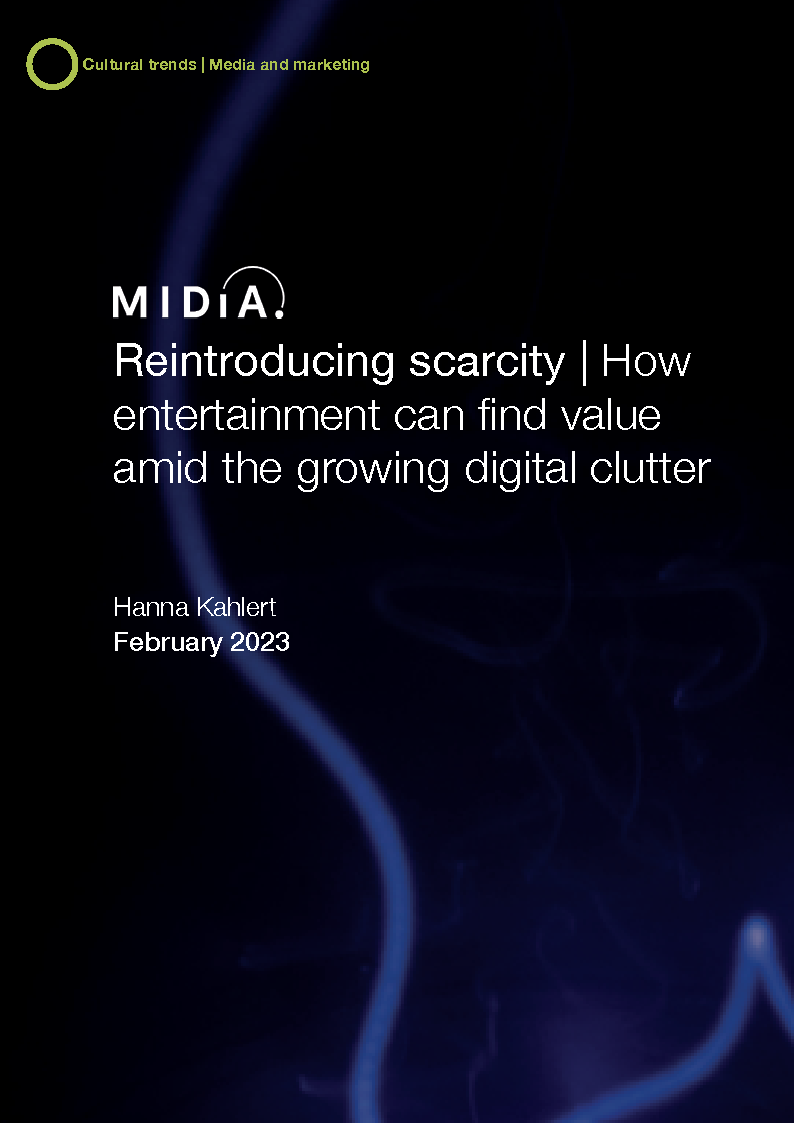Reintroducing scarcity How entertainment can find value amid the growing digital clutter

Get full access to this report and assets
If you are interested this report, or related reports such as After digital The search for a cheaper cultural moment and Social platform user snapshot Q3 2022 get in touch today to enquire about a report bundle.
Games, sports, music, video, audio, and social content all compete not only for consumers’ attention (and money), but also their fandom. However, the oversaturation of content is devaluing entertainment itself, by overly commodifying it.
Entertainment businesses and content providers will need to rethink how to generate better value for audiences, especially if they want to make true fans of those audiences – especially in an environment of recession (both in the global economy and consumer attention).
As we make the transition to web with AI-generated content adding yet more ‘content’ to the clutter, entertainment businesses and content providers must focus on value over volume, tapping into the event-driven cultural cornerstones on which fandom is built, and encouraging a deeper engagement with stories and narrative in attempt to combat the ever-growing doom scroll.
Companies and brands mentioned in this report: Apple TV+, BTS, BeReal, Bridgerton, ChatGPT, DALL-E, Decentraland, Disney+, Instagram, OpenAI, Meta, Paramount+, Peacock, Spatial, and TikTok
